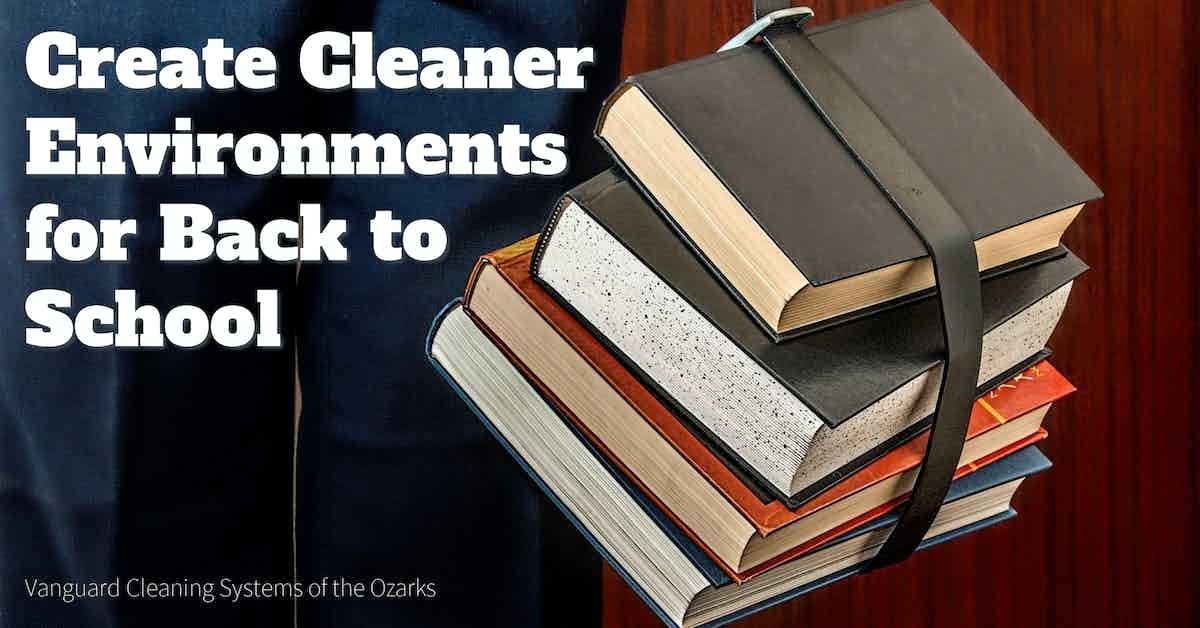Cleaner, healthier classroom environments translate into higher student and teacher attendance, better test scores, a significantly increased probability of graduating high school, and markedly improved long-term life outcomes.

The Impact of Classroom Cleanliness on Student Health and Attendance
COVID placed a significant burden on the education system, forcing most schools across the country into a remote or hybrid learning model that has negatively impacted student mental well-being, resulting in the perception of increased negative behaviors.
In a recently published study, researchers sought to understand the effects of moving children from in-classroom to home or hybrid models through four separate surveys.
Parents reported on perceived shifts in student mental health, aggression, and adaptability challenges as students migrated between classroom learning and being forced to learn from home through a remote session.
According to the studies' results;
Most children switched learning formats at least once across the 4 [surveys].
Child fixed-effects analyses indicated that children’s behavioral outcomes tended to be worse during remote schooling than during in-person schooling.
Parents reported that when learning remotely, their child exhibited worse general behavior, more maladaptive behavioral changes, and more dysregulated behaviors than when learning in person.
Children experiencing hybrid learning fell in between; they exhibited better general behavior than when remote and worse behavior than when in-person.
School Learning Format and Children’s Behavioral Health During the COVID-19 Pandemic
Clearly, a strong correlation exists between a child's consistent presence within a classroom and their mental health.
Addressing this, the U.S. Federal Government invested approximately $190B in the Elementary and Secondary School Emergency Relief (ESSER) fund to provide much-needed and long-delayed money to schools to upgrade, among other infrastructure, severely underperforming or outdated HVAC and air filtration systems that have a direct impact on the transmission of airborne pathogens and indoor air quality (IAQ).
Not only will the upgraded airflow systems help mute the transmission of airborne viruses, such as SARS-CoV-2, but will, hopefully, help reduce the burden of asthma on students, which statistically appears to result in increased excessive absenteeism.
According to the results of a multi-year study published by the U.S. Centers for Disease Control and Prevention, which assessed student absenteeism due to asthma;
Overall, students in the sample were absent 10.4 days per year. Students with asthma missed more days than students without asthma.
Excess absenteeism was highest based on student-reported asthma-related ED visit/hospitalization or asthma medication use (1.9 more days that those without student-reported asthma treatment).
Excess absenteeism was 1.5 days for school health center record of asthma and 1.6 days for parent-reported ever asthma.
Further, the burden of seasonal influenza and the common cold continue to negatively impact student performance, health, and long-term outcomes.
According to statistics gathered by Nilfisk;
- Approximately 22 million school days are lost to the common cold and 38 million to the flu.
- Public school teachers in the U.S. miss 9 or 10 days of school every year.
- Researchers have found that being taught by a substitute for 10 days a year has a more significant impact on a child’s math scores than changing schools, and that being taught by a substitute for even one day is more detrimental than replacing an average teacher with a terrible one.
- The annual national cost of teacher absenteeism is estimated at $25.2 billion, with $4 billion due to substitute stipends and associated administrative costs.
- Poor health is one of the main causes of chronic absenteeism (missing 15+ days of school) among students.
- The U.S. Department of Education calls chronic absenteeism “a hidden educational crisis” that leads not only to higher dropout rates but also poorer outcomes later in life. In the 2015-2016 school year, about 1 in 6 children was chronically absent.
Source:
Cleaning as a Source of Classroom Hygiene Remediation
Addressing the decline in classroom safety and hygiene and the resulting health impact on students and teachers requires a renewed commitment to scientifically-backed cleaning and disinfection processes that remove bacteria and pathogens from surfaces and prevent the spread of airborne allergens and illness-causing microbes.
Proven methods include:
- Regularly cleaning and disinfection of regularly occupied areas of a building using HEPA filtered vacuums, microfiber, and EPA-registered commercial-grade detergents and disinfectants.
- Routinely spot-disinfecting facility hotspots.
- Performing planned deep cleaning and facility maintenance tasks, including carpet and floor care, high-dusting, and facility-wide disinfection services with electrostatic disinfection appliances, and;
- Resolving indoor air quality issues through improved mechanical ventilation and employing Safer Choice cleaning and disinfection products where applicable.
Takeaway
Classroom cleanliness and safety directly impact student and educator attendance, performance, and outcomes.
Increasing funding to address outdated facility infrastructure will help ease the burden of poor IAQ, but it is not a long-term solution that addresses all major health and hygiene challenges.
Routine enhanced cleaning and disinfection protocols proven effective during the SARS-CoV-2 pandemic will significantly improve student and teacher attendance while reducing the spread and burden of illness inside of the classroom.
Outsourcing is a proven method for onboarding skilled service providers equipped with the latest training, processes, and technologies for a fraction of the price of maintaining a comparable service in-house.
Contact us today and discover why Vanguard Cleaning Systems® is the Standard of Clean® for businesses throughout Northwest Arkansas, Missouri, and Oklahoma.
In Oklahoma, dial 918-960-4450
In Arkansas, dial 479-717-2410
In Missouri, dial 417-812-9777

